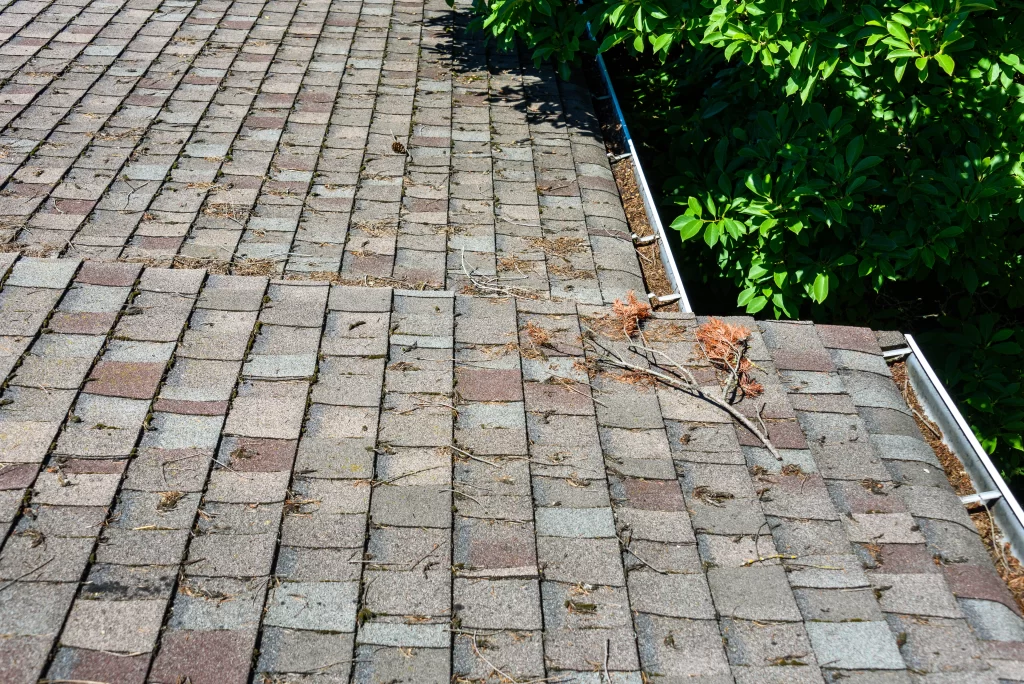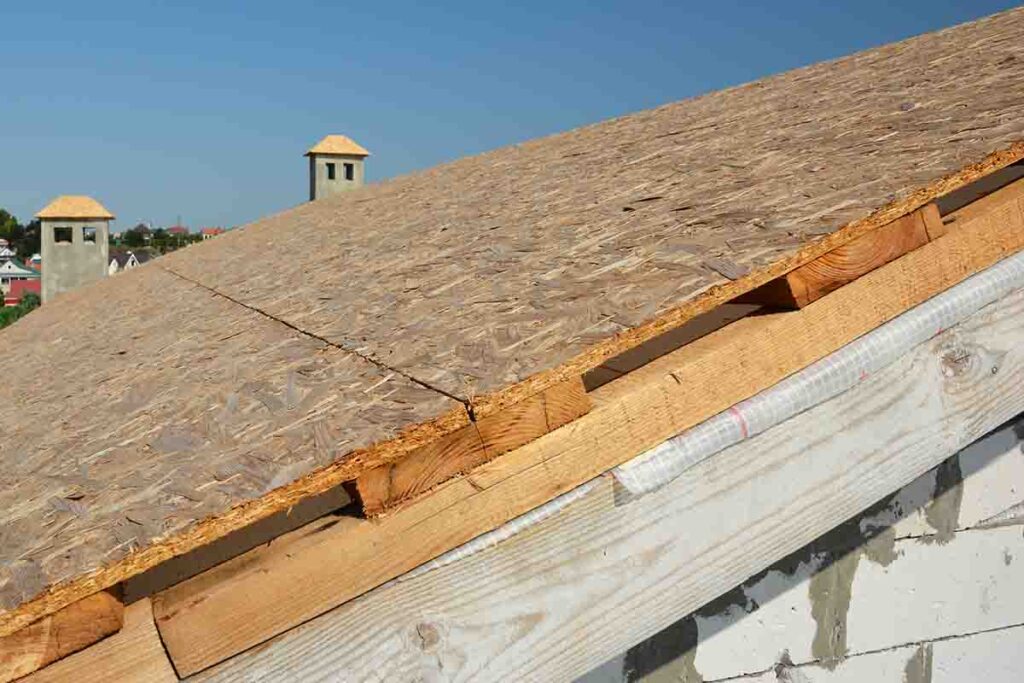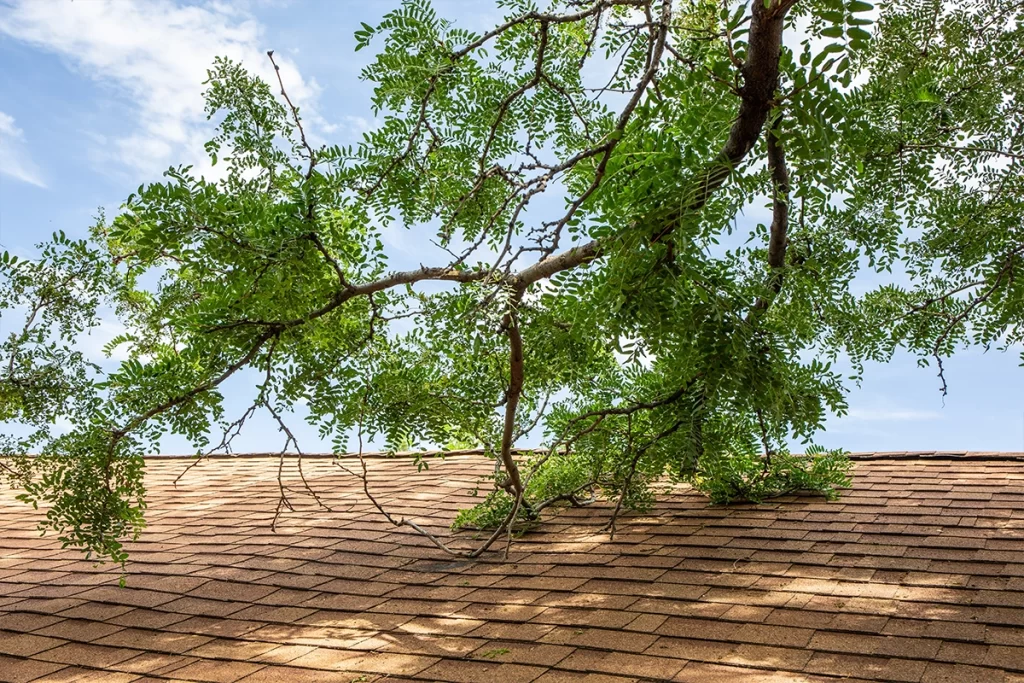Are you alarmed by the sight of a sagging roof on your home? Because sagging affects the sturdiness of the roof structure, it’s not an issue that you will want to ignore. Ignoring a sagging roof can lead to more severe problems such as leaks, mold growth, and structural damage.
As a homeowner, it’s essential to address this issue promptly to prevent further decline of your roof’s integrity.
Fortunately, there are repair options available to rectify a sagging roof. By knowing the signs, causes, and repair options, you can properly assess and protect your investment.

Signs of a Sagging Roof
The roof plays a critical role in protection and structural integrity of your home. Recognizing the signs early can prevent further damage and potentially costly repairs. Watch for these common indicators that your roof may be sagging.
- Visible Sagging: Visually inspect your roof from a distance. If you notice a dip or curve where the roofline should be straight, it could indicate sagging. This can be particularly noticeable after storms with heavy rain.
- Interior Damage: Check your attic or ceiling for signs of water damage, such as water stains, mold growth, or peeling paint. Sagging areas on the ceiling can suggest a compromised roof structure.
- Roof Decking Irregularities: When walking on the roof, a professional roofer can inspect for any areas that feel soft or spongy underfoot. This could indicate deteriorated decking due to excessive moisture from a sagging roof.
- Exterior Wear and Tear: Inspect the exterior of your roof for missing, cracked, or warped shingles. Misaligned or damaged shingles can result from the shifting caused by a sagging roof.
- Structural Deflections: Inspect the exterior of your roof for missing, cracked, or warped shingles. Misaligned or damaged shingles can result from the shifting caused by a sagging roof.
Common Causes of a Sagging Roof
- Water Damage: Water damage is a common culprit. Over time, water infiltration from leaks, poor drainage, or severe weather conditions can compromise the structural integrity of your roof. The moisture weakens the roof materials, causing them to warp, decay, and eventually lead to sagging sections. It’s crucial to address any signs of water damage promptly to prevent further deterioration of your roof.
- Excess Weight: The weight of elements like heavy rain or improper construction practices can put immense pressure on your roof. Excessive weight can stress the roof’s structure beyond its intended capacity, causing it to deform and sag over time. Ensure proper drainage, install proper drainage, and keep the roof clear of debris. This will prevent the accumulation of excess weight that could compromise your roof’s stability.
- Bad Materials or Poor Installation: Using subpar materials or incorrect installation techniques during roof construction can significantly contribute to roof sagging. Low-quality materials are more prone to deterioration, while improper installation compromises the roof’s overall strength. Choose high-quality materials and hire experienced professionals for installation. This will help prevent issues that may lead to roof sagging in the future.
- Age: As a roof ages, it undergoes natural wear and tear, leading to structural deterioration that can result in sagging. Over the years, exposure to sunlight, fluctuating temperatures, and inclement weather conditions can weaken the roof materials. This will cause them to lose their original strength and shape. Regular maintenance, inspections, and timely repairs help prolong the lifespan of an aging roof and prevent future sagging issues.
Repair Options for a Sagging Roof
When dealing with a sagging roof, it’s crucial to explore effective repair options promptly. Proper repair not only restores the structural integrity of your roof but also safeguards your home against further damage. Here are some repair options available to you.
Internal Bracing and Rafters Reinforcement
One of the key repair methods for a sagging roof is reinforcing internal bracing and rafters. By strengthening these vital components, you can restore the roof’s stability and prevent future sagging issues. This process involves strategically placing additional support beams and ensuring that existing rafters are secure. Reinforcing internal structures is a proactive approach to tackle sagging and maintain a durable roof over time.

Sheathing Replacement
Another crucial repair option is replacing damaged or insufficient sheathing. Sheathing serves as the base layer for the roof and provides essential support for roofing materials.
Over time, sheathing may degrade due to moisture exposure or wear and tear, leading to roof sagging. By replacing thin or damaged sheathing with sturdy material, you can enhance the overall structural support of the roof. This repair step is vital for reinforcing the roof’s foundation and preventing further issues.
Professional Inspection and Repair Services
You will want to seek professional roofing services when dealing with a sagging roof. Professional contractors have the expertise and tools to conduct a comprehensive assessment of the roof’s condition. Through thorough inspection, they can identify underlying issues causing the sagging and recommend effective repair solutions.
Whether it’s reinforcing internal structures, replacing sheathing, or addressing other structural concerns, professional roof repair services ensure that the job is done correctly and efficiently. Professional roofers will operate with safety and precision. Hiring experts for the repair process can provide peace of mind and a long-lasting solution.
Address a sagging roof effectively and safeguard your home’s structural integrity. Taking proactive steps to repair and reinforce your roof ensures long-term durability and protection against future issues. Don’t delay in addressing roof problems to maintain a safe and secure living environment. Improve your roof’s integrity with timely repairs and expert guidance for long-lasting structural stability.
Roof Maintenance Tips to Prevent Sagging
You can prevent a sagging roof and prolong the lifespan of your roof through regular roof maintenance. Maintenance is especially important in areas where weather conditions can impact the structure. Here are some practical tips to help you keep your roof in top condition.
Regular Inspections and Maintenance
Proper Drainage and Gutters Cleaning
Ensuring proper drainage is crucial in preventing water accumulation, which can weaken the roof structure and lead to sagging. Clean your gutters regularly to remove debris and prevent clogs that can obstruct water flow. Consider installing gutter guards to minimize the collection of leaves and debris, maintaining optimal water flow off the roof.
Trimming Overhanging Branches
Overhanging tree branches can pose a risk to your roof, especially during storms or heavy winds. Trim back branches that hang over your roof to prevent debris from building up and adding excess weight. This proactive measure can reduce the likelihood of damage to your roof and help maintain its structural integrity.
Follow these roof maintenance tips to stay proactive in caring for your roof. You will minimize the risk of sagging and ensure your roof remains in optimal condition to withstand the elements. Remember, a well-maintained roof is a key component of a safe and secure home.

Conclusion
A sagging roof does have the potential to become a big problem. However, you can maintain a sturdy and durable roof that will protect your home for years to come. You will want to stay informed about the causes and watch for the signs of a sagging roof. Remain proactive in maintenance, and promptly address any issues that arise.
If you notice signs of a sagging roof, consult with a professional roofer to assess the extent of the problem. They will be able to determine the best course of action for your specific situation.


